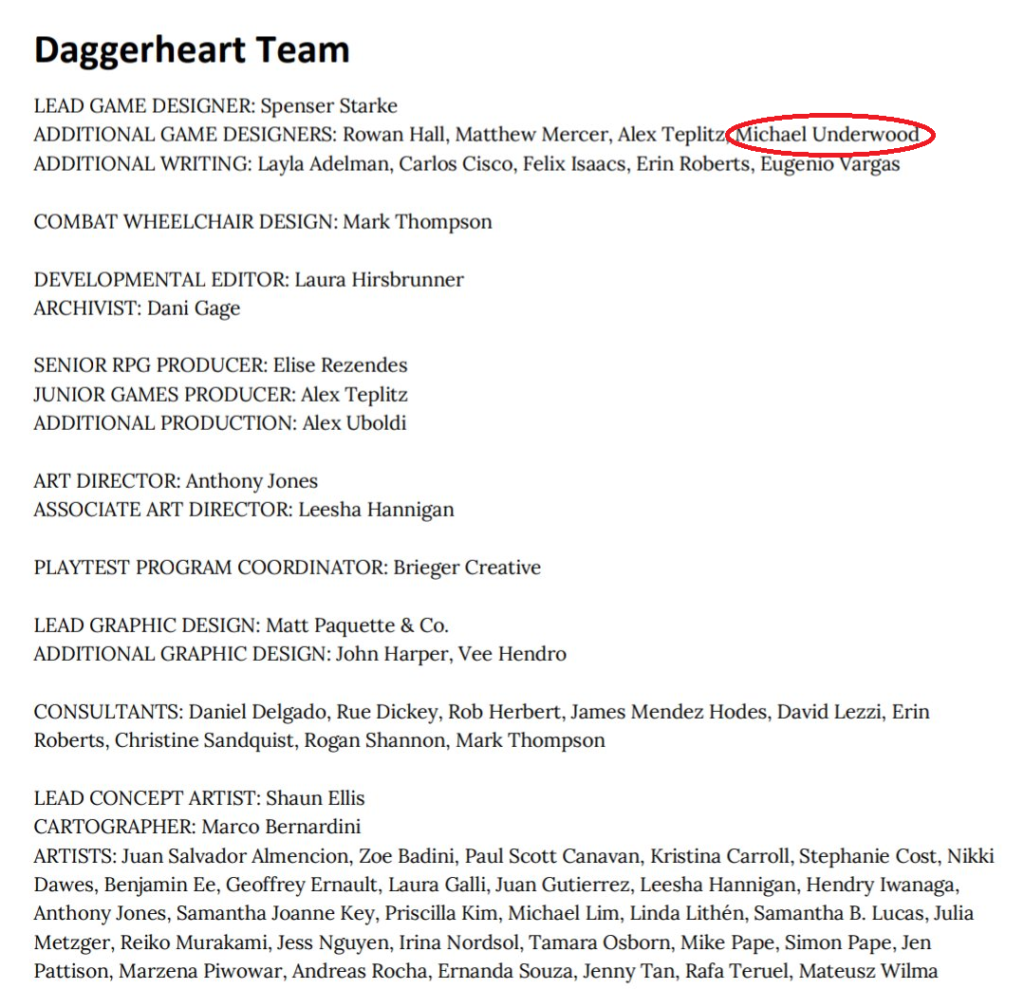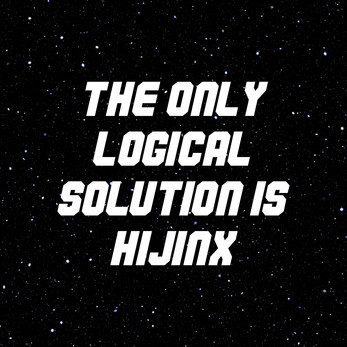I’ve been thinking a lot about D&D and tabletop RPGs, not just in general, but for some specific reasons that will become clear pretty soon (/tease). Here are some of these thoughts, prompted by a new release from Wizards of the Coast re: D&D.
This week, the Wayfinder’s Guide to Eberron arrived on the PDF storefronts. The guide is a living document-slash-Early Access-type-dealie unofficial supplement for Dungeons & Dragons 5th edition (5e), bringing the world of Eberron back to the game. Eberron was created by Keith Baker (who you might also know as the creator of Gloom) for the D&D 3rd edition setting contest. I remember entering the contest with negligible hopes, and I was exactly right – didn’t make it past the first round. Alas, the email address I used is long gone so I don’t have a record of it, and only remember the vague details (it was vaguely Deadlands-inspired and was focused on like the power of the land and artifacts, I think?). I’ve gotten better at keeping track of my ideas, thankfully.
Drama Systems
When Eberron came out, it was remarkable (to me) for applying a Drama Die-style mechanic to D&D – Action Points. Action Points could be used to make a roll more likely to succeed or to activate class abilities, etc. This was meant to represent the pulp adventure tone of Eberron, which was more cinematic than the default 3e D&D tone.
Around fifteen years later, this re-introduction of Eberron comes with a new mechanic, again cribbed from and/or reminiscent of something happening elsewhere in the RPG design world – Environmental Elements.
This mechanic is, IMO, straight-up a D&D version of Situation Aspects from FATE Core.
This type of mechanic, where drawing upon the established details of a scene in your action (We said there’s a chandelier, so I’m going to jump up and swing on it to get over the guards so we can flank them) grants a mechanical bonus, is a fabulous tool. In the Wayfinder’s Guide, it grants advantage. The version from FATE allows for an extra aspect bonus (the game is built on creating and using aspects for bonuses).
Newer story/indie games talk about ‘Fictional Positioning’ and ‘Fiction-First Play’, which are both ways of focusing the play and judgment of mechanical advantages on the specifics of the scene in a way that enhances visually evocative play. Rather than thinking about what you want the rules to do for you, this style says “what does the fiction say right now, and what do you want to happen in the story?” and then asks “how can the rules help you make that come alive or resolve a dangerous or contested situation?”
As in, very much a way of playing RPGs that I like. I like cool rules, I like utility powers and mechanics that express theme and let players show mastery and achieve extraordinary results. But a lot of why I like those things because they let me drive the story forward in interesting ways.
When I cracked open the Wayfinder’s Guide, one of the questions I had was “how will this version of Eberron convey the pulp adventure tone the world is known for?” In 3e, it was action points. Here, Environmental Elements — and maybe more! I’ve just started reading. Action Dice do not make a return, though as this is a work-in-progress, who knows what will come down the road. And really, I don’t think it’d be too hard to just port Action Dice over to your D&D 5e game. Especially if you want to focus on the high-adventure/pulp heroics tone.
The Lineage of Chainmail
5e is (IMO) the most playable, most accessible edition of D&D yet, even though it is still very firmly tied to its lineage as a spin-off from a miniatures war game (Chainmail). I like some crunch (by crunch I mean more detailed and interconnected mechanical systems) – in 3.X and 5e D&D I like classes like Rogue, Bard, and Inquisitor that have some interesting inter-connected systems and utility powers, especially when it expresses an interesting character theme. But even though it’s more accessible, 5e D&D still has big spell lists, massive numbers of systemic interactions that need to be considered at every step of the way in a big, dramatic fight. And for me, it still has the Superhero Crossover problem of “Did you have the right plan for this?” where in order to keep combat moving, you have to reach such a high level of internalization of tons of different spells and effects and interactions and countermeasures so that you can declare your action and resolve it very quickly.
But then I see another problem on top of that. To keep tactical combat moving, you have to be concise and optimized. In my experience, it’s common for big combats to last 90 minutes or longer, and that’s with players and the GM keeping things moving. But what *I* want most from a fight is emotional stakes and cool description – the baseline mechanics of D&D don’t help me with that – unless the DM decides my description is cool enough to earn Advantage (more on that later)
Slowing a fight down to convey how your character feels or to do a flashback or to give a cool description of your action, even a 15-30 second description…it still slows the fight down. And the system is already set up for combat to be a slog. So as a player I end up getting self-conscious about balancing optimized, efficient play with my own play agenda of expressing my character’s emotional landscape and/or being a co-cinematographer and describing a cool action.
The Advantages/Disadvantages of Advantage/Disadvantage
D&D 5e has Advantage/Disadvantage, which is an *excellent* system. (In brief – normally in D&D you roll one 20-sided die and add a number to see if you rolled high enough to do the Thing. With Advantage, you roll 2 dice and take the better result. With Disadvantage, you roll 2 dice and take the lower result) But in my own games and the games I hear people talk about, Advantage and Disadvantage are criminally under-used. My friend Andy Romine said this about Advantage/Disadvantage:
I love the idea of Advantage/Disadvantage, but my experience has been just that — the DM “grants it.” Kind of a one-way street…Nothing stopping PCs from asking for Advantage (“Hey, I see that chandelier…”) but the game’s action economy doesn’t seem organically set up for this.
That’s the thing – Advantage/Disadvantage feels more like it rests on top of the core system instead of being as fully integrated into the system – mostly because the major way that you get either is a Guess Culture thing. You can describe an action hoping for advantage, you can ask for it, but it’s still all by fiat. The Inspiration system isn’t enough, IMO.
And beyond that, I’m not sure the D&D materials do a good enough job of communicating to the DM how powerful a tool Advantage/Disadvantage is. Even though other parts of D&D talk about Advantage/Disadvantage, it still mostly comes from DM fiat. If more things in D&D just straight-up gave you Advantage/Disadvantage, from class abilities to spells, etc. it would feel more like a critical part of the game, and I think it’d do a better job of helping the player avoid the famous whiffs where the d20 conspires against an awesome idea/action/etc. and then it just…fizzles.
But now, Environmental Elements takes a *huge* step toward making Advantage feel like a central part of the D&D system.
New Moves, New Opportunities
And here’s another thing I’ve been thinking about for D&D. One of the things that I love about the Powered by the Apocalypse lineage of games (Apocalypse World, Dungeon World) is the way they approach information-gathering. In those games, when you want to investigate a scene or get information from someone, it falls under one of several ‘Moves’ (attacking is a move. Trying to intimidate someone falls into another move. It’s a cool approach. Go read Apocalypse World). With these moves, you roll and then get to pick from a list of questions. If you roll poorly, you get fewer questions, and maybe you take a consequence but still get some information.
I’ve been thinking about running a game that I’d call D&D but would really be drawing heavily on the systems of games like Dungeon World, Blades in the Dark, and FATE Core. I’d use the faction rules and downtime rules and progress clocks from Blades in the Dark, and I’d adapt the information-gathering moves from Apocalypse World/Dungeon World
It’d got a little something like this.
“When you analyze a situation, Roll Perception. For every 5 points of your result, you get to ask one question:
What is the biggest threat?
What is my way in/out?
What happened here?
Are there hidden threats I should know about?”
And then like maybe you get an extra question if you also accept a consequence/suffer a cost/etc.
Example – “You can get a better look and one more question if you scramble to the top of the tree and expose your position to the giant crows.”
None of this is new in the Powered by the Apocalypse lineage. But it’s a huge departure for the ‘make the DC or fail’ setup of D&D, even in 5e. But even that small change is liberating for me as a player and as a DM because it is less of a binary state. It’s more tangible, more focused. If I only get one question, I can prioritize. And if I want to push for more information, I have the permission to push and the cost/benefit is spelled out and systematized.
And what I think I can do here is to hybridize D&D. I can start players with the familiar trappings or the familiar shell of the D&D-style adventure fantasy, but hack the game by changing come of the cogs and gears in the system with others that I like better, and to add some after-market attachments (faction rep, downtime action, clocks) to provide more tools to make D&D into the kind of game I want to be playing. I could also just run something like Dungeon World, and I think I will, but the idea of trying to make D&D into the version of the game that I want is very appealing.
A while back, I applied to a D&D designer position – and one of the things I pitched in that application was the idea of a D&D Accelerated (inspired by FATE Accelerated, a version of FATE Core). This hacking of D&D process would basically be me designing D&D Accelerated through exploratory play, which is not a bad approach, IMO.
But mostly, I am excited to be playing more tabletop games and to draw joy and inspiration from the game texts, sourcebooks, and more. Look for more gaming news from me soon. 🙂


